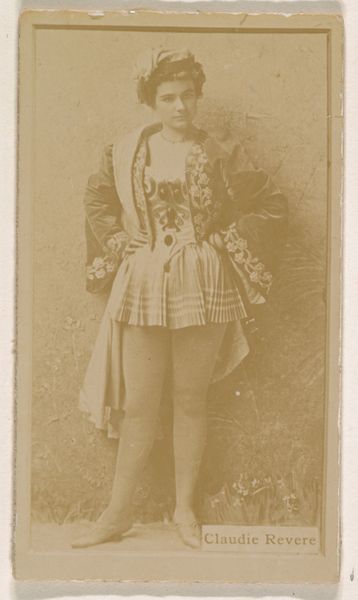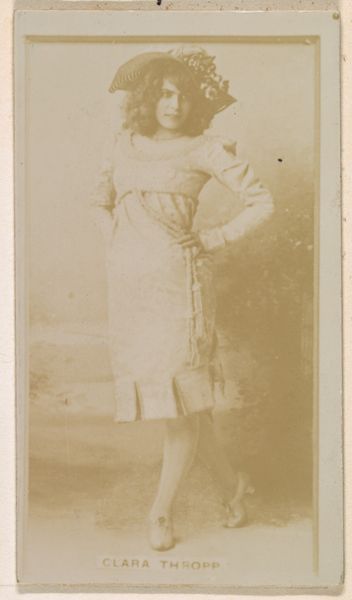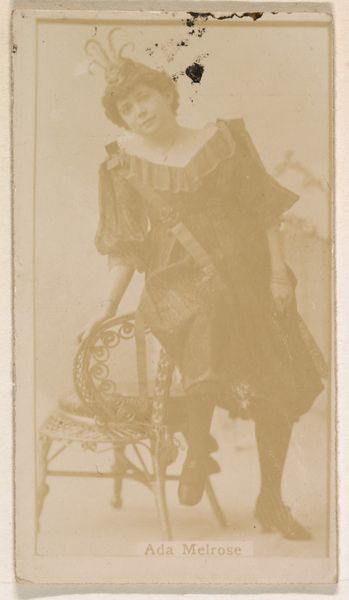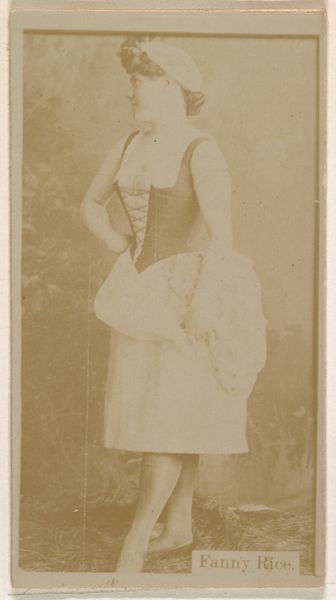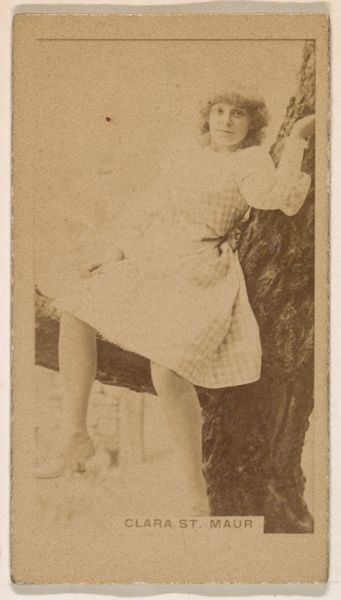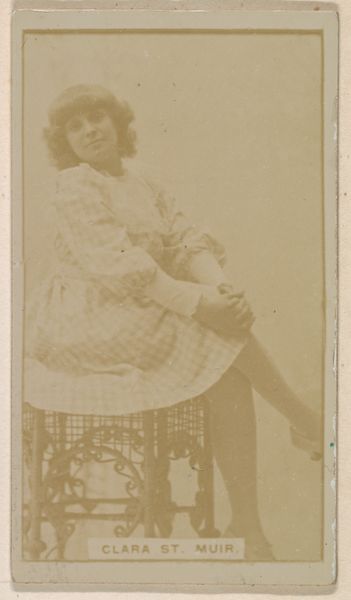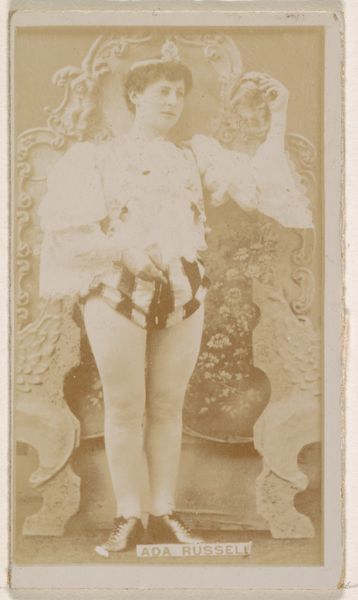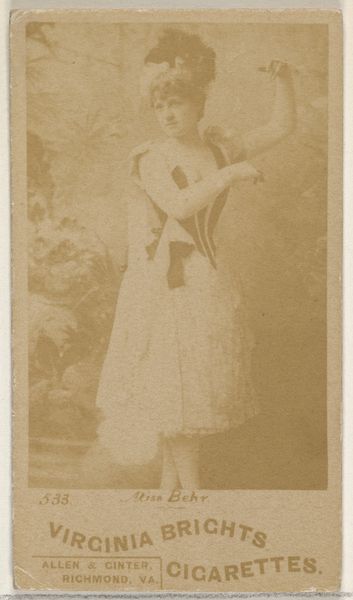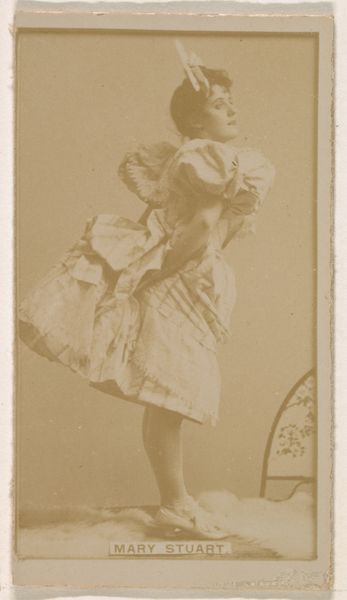
Pearl Revare, from the Actresses series (N245) issued by Kinney Brothers to promote Sweet Caporal Cigarettes 1890
0:00
0:00
Dimensions: Sheet: 2 1/2 × 1 7/16 in. (6.4 × 3.7 cm)
Copyright: Public Domain
Curator: Immediately, I am struck by the soft, almost ethereal quality of the print, the delicate pose, and how it encapsulates an era. Editor: Exactly. This print is entitled “Pearl Revare, from the Actresses series (N245)”, created in 1890 by the Kinney Brothers Tobacco Company. It was designed as a promotional item for Sweet Caporal Cigarettes. Curator: Ah, the tobacco industry employing glamour. No surprise there, really. The image exudes a playful innocence despite knowing its place as a sales tool. Who was Pearl Revare? Editor: It's important to consider how images of women like Revare circulated and functioned within societal and power structures. While it’s difficult to find exhaustive details on Revare herself, we know these “actress” cards were extremely popular collectibles that fueled the cult of celebrity. The actress series presents them as simultaneously accessible, yet elevated and exotic figures. The visual style takes on the traditions of Ukiyo-e, specifically in its framing and the bold pose of Revare. Curator: Fascinating to see the blending of these visual cultures to cultivate aspiration. Also consider how photography at the time was being used for cataloging, archiving and advertising, playing a role in shaping gendered representation. This small photograph provided a powerful means for women to express identity, however potentially manufactured by industry forces. Editor: Indeed. It is key to unpack this layering, recognizing the commercial intent that simultaneously shaped the image, but did not fully extinguish individuality and aspiration. As these were distributed to consumers, especially the rising middle-class at this time, such an image granted entry into a world of fantasy and fame. Curator: So we're left with both the critical reading of consumerism and capitalism's effects, as well as a portrait of its subject who exists independent of such machinations, though affected by the world around her. I'll certainly never look at my cigarette cards the same way again. Editor: Well, this analysis hopefully provides a framework for understanding that the story behind these cards can teach us a great deal about the socio-cultural history of image-making in America and about how gender operates within popular visual culture.
Comments
No comments
Be the first to comment and join the conversation on the ultimate creative platform.
